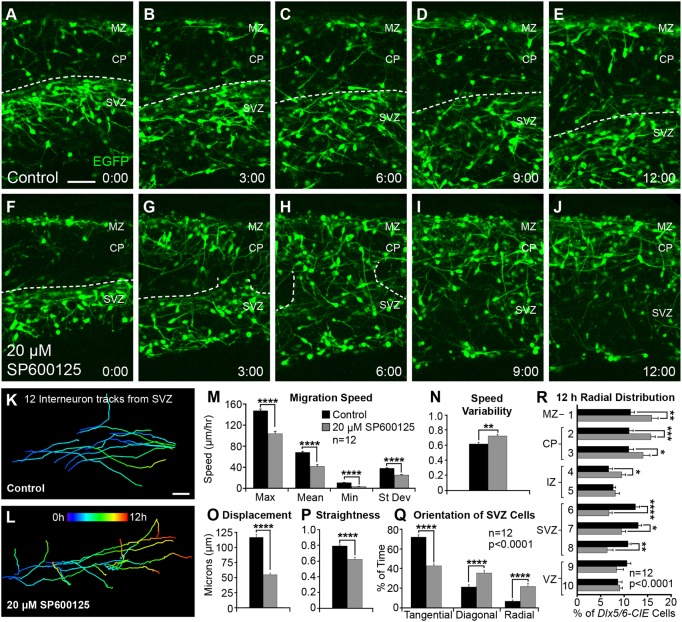Fig. 2.
Dynamic migratory properties of cortical interneurons are perturbed following pharmacological inhibition of JNK. (A-J) Movie frames from E14.5 Dlx5/6-CIE cortices imaged under control (A-E) or 20 μM SP600125 (F-J) conditions for 12 h ex vivo. Dashed lines follow the top of the SVZ stream in control conditions (A-E), and breakdown of the SVZ stream in JNK-inhibited conditions (F-J). (K,L) Tracks (pseudo-colored by time) from 12 interneurons in control (K) or 20 μM SP600125 (L) conditions. For each condition, 12 interneurons were tracked from n=12 movies (144 tracks/condition), generated from at least seven different embryos over 3 experimental days. (M-P) Quantification of interneuron migratory properties (Student's t-tests). (Q) Quantification of interneuron leading process orientations (two-way ANOVA: F(2,66)=61.71; P<0.0001). (R) Quantification of the radial distribution of interneurons at 12 h (two-way ANOVA: F(9,220)=7.651; P<0.0001). Data are mean±s.e.m. ****P<0.0001, ***P<0.001, **P<0.01, *P<0.05, Fisher's LSD post-hoc test. Scale bars: 50 μm.

